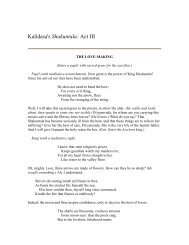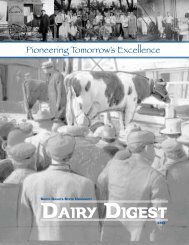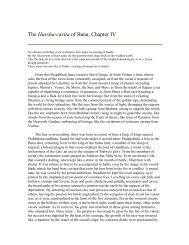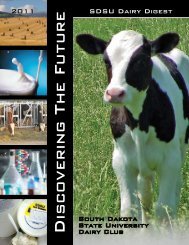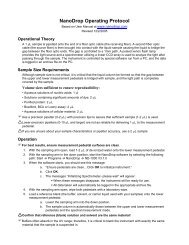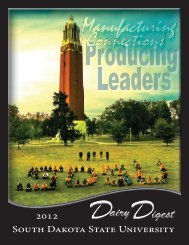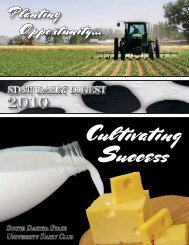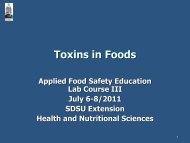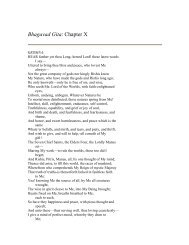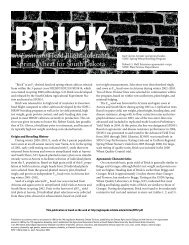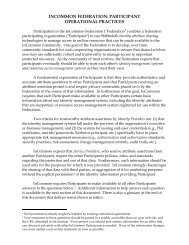2025 Design & Master Plan - South Dakota State University
2025 Design & Master Plan - South Dakota State University
2025 Design & Master Plan - South Dakota State University
Create successful ePaper yourself
Turn your PDF publications into a flip-book with our unique Google optimized e-Paper software.
2.2 sustainability<br />
All new campus facilities are required to be designed to achieve a minimum<br />
of LEED Silver Certification. Building construction alternatives should be<br />
evaluated that explore sustainable performance beyond this requirement.<br />
The university intends to develop buildings that require less maintenance<br />
and operational investment over time while continuing to meet the needs<br />
of users and enhance the campus aesthetic. This can be accomplished by<br />
extending the renewal cycles for building materials, by increasing building<br />
energy efficiency, and by reducing water consumption of the building users.<br />
These design guidelines support the achievement of fiscally sound and<br />
environmentally responsible development and the wise stewardship of all<br />
campus resources. Examples of the type of activities are:<br />
Building design should maximize flexibility to satisfy the varied demands<br />
of the present and future. The guiding standard should be that the building<br />
envelope be designed for 50 years of service, with a 15- to 20-year building<br />
interior life. A building should be able to accommodate some level of<br />
adaptation and reconfiguration without exorbitant expense or structural<br />
modification.<br />
New architecture should incorporate the latest in proven sustainable building<br />
technologies. When possible, building placement should capitalize on solar<br />
heat gain/loss in the appropriate months and maximize the introduction of<br />
natural light and natural ventilation through the use of operable windows.<br />
1) When possible, design facilities and building systems to save nonrenewable<br />
resources through the use of substitutes, recycling, and<br />
better recovery and reuse.<br />
2) Include consideration for maintainability over time through potential<br />
benefits from building lifecycle cost analyses, alternative<br />
performance systems, and other strategies at time of design and<br />
construction.<br />
3) Promote ongoing energy conservation practices, water conservation<br />
and waste reduction.<br />
4) Address alternative transportation opportunities by developing a<br />
campus environment that encourages walking, bicycling and<br />
future transit expansion.<br />
Campus buildings are designed for a 50-year life. Lifetime operating costs<br />
of these buildings will most likely exceed the original cost of construction.<br />
Reduction of these long-term operating costs needs to be considered when<br />
planning for new facilities. Building designs should be durable and readily<br />
maintainable, and should be flexible in design in order to accommodate<br />
repurposing of spaces to meet changing programmatic needs. This may<br />
translate into higher initial construction costs, but will ultimately reduce<br />
lifetime operating costs.<br />
jackrabbit village<br />
b:5




